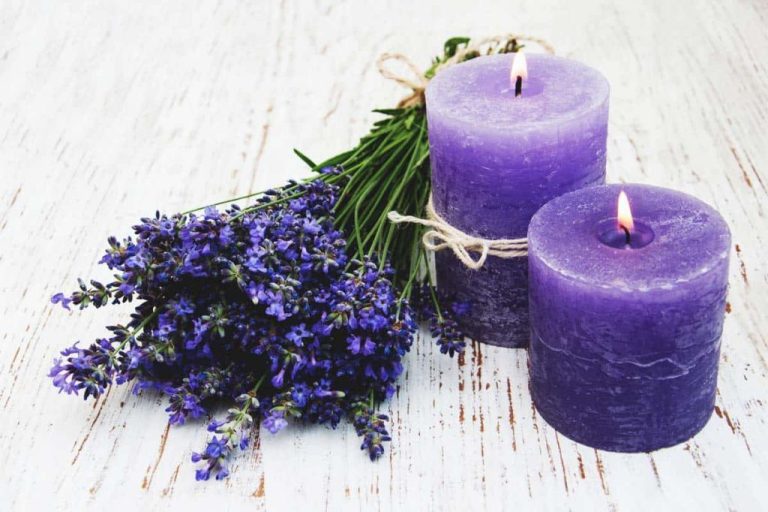Which Fragrance Is Best For Room?
A home’s scent can have a powerful effect on its ambiance and the moods of those who live there. The right fragrance can make a home feel tranquil and welcoming or energetic and inspiriting. But choosing a room fragrance isn’t as simple as picking one you find pleasant. The size and layout of your space, the room’s purpose, and who occupies it should all factor into your decision.
With so many fragrance types and delivery methods available today, it can be challenging to select an aroma that enhances your home. But considering elements like fragrance strength, allergies, and desired mood can simplify the process. The goal is to find a scent that feels cohesive. This guide covers tips and key considerations to help you choose the best fragrance for each room in your home.
Consider the Room
Different rooms in your home serve different purposes, so it’s important to consider the room when choosing a fragrance. For example, kitchens and bathrooms tend to be spaces where you want an invigorating, energizing scent like citrus or mint. Bedrooms and living rooms are better suited for relaxing fragrances like lavender or vanilla.
For kitchens and bathrooms, stick to light, clean scents that won’t clash with the smells of cooking or cleaning products. Floral, fruity, or herbal fragrances work well. In bedrooms, choose soothing fragrances that promote rest like chamomile or sandalwood. For living rooms, select warm scents that encourage conversation like cinnamon or pine. Kid’s rooms can handle slightly sweeter scents like melon or peach.
Also consider a room’s size. Smaller rooms need lighter fragrances so the scent doesn’t become overpowering. Larger rooms can handle more robust fragrances. Make sure any fragrance complements the room’s existing design and color scheme. The fragrance experience should harmonize with the room’s overall feel and purpose.
Fragrance Types
There are several major fragrance categories that room fragrances usually fall into:
Floral
Floral fragrances contain notes of flowers such as rose, jasmine, lavender, or cherry blossom. They have a delicate, sweet, romantic aura. Floral scents work nicely in bedrooms, bathrooms, and other private spaces.
Citrus
Citrus fragrances contain fruity notes like lemon, orange, grapefruit, lime, or bergamot. They have a fresh, tangy, and uplifting scent profile. Citrus works well in kitchens, bathrooms, and areas where an energizing aroma is desired.
Woodsy
Woodsy fragrances contain earthy notes like cedar, sandalwood, pine, or oakmoss. They have an outdoorsy, masculine, natural aroma. Woodsy scents complement living rooms, studies, and rustic spaces.
Spicy
Spicy fragrances contain warm notes like cinnamon, clove, vanilla, or nutmeg. They have a cozy, exotic, inviting scent. Spicy fragrances work in bedrooms, living rooms, and anywhere comforting ambiance is key.
Fragrance Strength
When choosing a room fragrance, it’s important to consider the strength or intensity of the scent. Fragrances come in light, medium and strong intensities.
Light fragrances are subtle and understated. They provide a gentle aroma that isn’t overpowering. Light scents are great for small spaces, bedrooms, nurseries, and areas where you don’t want an intense fragrance. People who are sensitive to scents may also prefer lighter fragrances.
Medium fragrances provide a balanced, moderately strong scent. They smell pleasant without being too subtle or too overpowering. Medium intensity fragrances work well for most living spaces and common areas of a home.
Strong fragrances make a bold olfactory statement. They have an intense, potent aroma that fills a room. Strong fragrances are best for large spaces that need fragrance to carry. Areas like entryways, family rooms, living rooms and open concept spaces often benefit from a strong room fragrance.
Consider the size of the space, foot traffic, your personal preference and whether the area is public or private when deciding between light, medium and strong fragrances.
Fragrance Delivery Method
There are several options for delivering fragrance into a room. Here are some of the most common fragrance delivery methods to consider:
Candles
Candles are a classic option for scenting a room. The heat from the flame helps diffuse the fragrance from the candle wax into the air. Candles come in a wide variety of scents and styles. However, they do require supervision when lit and may not provide fragrance when unlit.
Diffusers
Diffusers work by dispersing fragrant oils into the air. There are electric and non-electric options. Electric diffusers use a fan to spread the scent, while non-electric ones rely on wooden reeds or heat. Diffusers typically provide continuous fragrance coverage. However, they require refilling with fragrance oils.
Room Sprays
Room sprays allow you to quickly disperse a fragrance. They come in convenient bottles that can be easily applied throughout a room. However, the fragrance from sprays doesn’t last as long as other methods. Frequent reapplication is required.
Scented Oils
Applying scented oils directly can be an effective way to scent an area. Oils can be dabbed onto fabrics, carpets, wood surfaces, and other materials. The scent is released as the oil dissipates into the air. Oils tend to provide lasting fragrance. But the application process can be messy and time-consuming.
Consider the size of the room, desired fragrance strength, and application effort when choosing among these popular fragrance delivery methods.
Allergies and Sensitivity
Many people have sensitivities or allergies to fragrances, which can cause reactions like sneezing, headaches, and skin irritation. Here are some tips for managing fragrance allergies when using room fragrances:
- Look for fragrance-free options or essential oil blends, which tend to be less irritating.
- Avoid strong synthetic fragrances and products with many listed fragrance ingredients.
- Opt for lighter, fresh fragrances like citrus, green tea, bamboo, etc. rather than heavy floral or musk.
- Use fragrance products sparingly – a little goes a long way.
- Ventilate the room well after spraying fragrance.
- Spot test fragrances on a small patch of skin first to check for reactions.
- Consider hypoallergenic fragrance-free candles or reed diffusers.
- Look for fragrance-free laundry detergent and cleaning products.
- Use an air purifier with a HEPA filter to help remove allergens.
Pay attention to symptoms and remove any fragranced products that seem to trigger reactions. See an allergist if problems persist.
Mood Enhancement
Fragrances can have a powerful effect on moods and emotions. The sense of smell is closely linked with the limbic system in the brain which controls emotions and memories. When you smell a pleasing fragrance, it can tap into positive memories and experiences and create an uplifting effect.
Some fragrances, like lavender, are known for having calming and relaxing properties. The scent of lavender triggers the release of serotonin in the brain which promotes relaxation. Using a lavender room spray or diffuser can help create a tranquil environment and provide stress relief.
Sandalwood, jasmine, and chamomile are also good choices for relaxation. On the other hand, citrus and minty scents are more energizing and uplifting. They can boost mood and increase alertness which is perfect for a home office or study space.
For romance, floral fragrances like rose and vanilla are ideal. They evoke feelings of love and intimacy. Candles with these scents can set the mood for a romantic dinner or night in.
No matter what mood you want to cultivate, there is likely a fragrance that can help induce it. Experiment with different scents and observe how they make you feel. Find the right fragrances for your needs.
Brand Comparison
When choosing a home fragrance brand, there are several factors to consider such as price, quality, scent options, and more. Here is an overview of some of the most popular home fragrance brands on the market:
Yankee Candle
Yankee Candle is one of the most well-known home fragrance brands. They offer a very wide range of scents, from fruity and floral to spicy and seasonal. Their candles are mid-range in terms of pricing, costing $15-$30 on average per jar candle. Yankee candles are poured using a proprietary wax blend to optimize scent throw and burn time. The quality is generally good, though some consumers complain certain scents are not as strong as expected.
Bath & Body Works
Bath & Body Works is also hugely popular for home fragrances like candles and wall plugs. They regularly put out new collections and seasonal scents. Their pricing is affordable, with jar candles ranging from $10-$25. The scents tend to be youthful and fruity in nature. While the fragrance quality is decent, the burn time is sometimes shorter than premium candles.
Voluspa
Voluspa is a luxury home fragrance brand that uses unique fragrance blends and artistic packaging. Their candles and diffusers retail for $25-$40 on average. The fragrances lean towards sophisticated essential oil blends with excellent complexity and longevity. The wax formulation allows for an even burn and long burn times. If budget is no concern, Voluspa is an indulgent option.
NEST Fragrances
NEST Fragrances combines sleek, modern style with clean, sophisticated scents. Their candles and reed diffusers cost $40-$65 on average. The fragrances are unique yet universally appealing. NEST uses premium ingredients for excellent scent quality and longevity. For those seeking elegance and luxury, NEST is a top choice despite the higher prices.
Tips for Testing and Choosing
When selecting a room fragrance, it’s best to test out a few different options before committing to a full-size purchase. Here are some tips for sampling and choosing the right scent:
– Visit stores that offer testers and smell strips – this allows you to get a quick impression without buying. Pay attention to how the scent evolves as it dries down.
– If available, request free samples or trial sizes from brands you’re interested in trying. Use them in the actual space to get a feel for how they perform.
– Consider your senses of smell and scent preferences vary throughout the day and year. Try testing at different times to account for this.
– Allow the fragrance to linger in the space for at least 24 hours. Make notes on performance over time.
– Get input from others who frequent the space for an objective opinion.
– Trust your instincts – if you feel instantly refreshed and uplifted by a scent, that’s a good sign it’s right for you and the room.
– Start with lighter, subtle fragrances if you’re new to scented spaces. You can always upgrade to bolder scents down the line.
– Be willing to experiment and layer different scents until you find the perfect olfactory blend.
Conclusion
Choosing the best fragrance for a room ultimately comes down to personal preference. Consider the room’s size, purpose, and your desired ambiance. Test out a few options to find the right strength and scent profile. Fresher, lighter fragrances like citrus or floral notes tend to work well for most everyday rooms, while warmer, richer fragrances like vanilla or sandalwood can enhance relaxation in bedrooms. But don’t be afraid to get creative and find something unique that you love. Just be mindful of allergies and sensitivities. Start with modest amounts and adjust as needed. With a little experimentation, you’ll find the perfect signature scent for your space.
When testing fragrances, be sure to smell from testers or samples first whenever possible. And try scattering scents throughout a room rather than concentrating them all in one spot. Finding the right balance and coverage is key. Consider layering a few complementary scents as well. There are so many wonderful options to explore. The most important tip is to trust your own nose and go for what brings you joy. A beautiful fragrance that lifts your mood each time you walk in is the best fragrance for any room.





